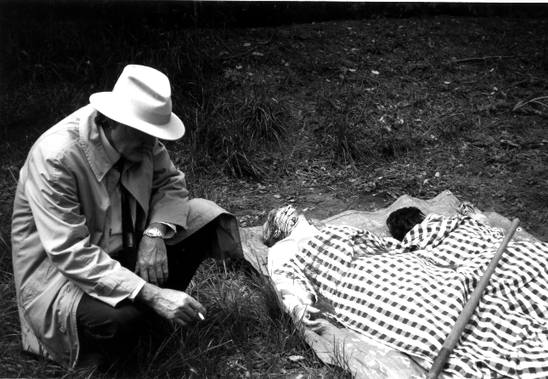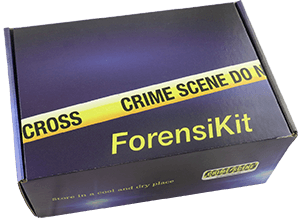
What happened?
1998
Doris Hammack of Detroit, Michigan, came to Yoknapatawpha County claiming to be LeAnne Izard, who hadn't been seen since the murder of her parents 40 years earlier.
1958
On April 11, 1958, the bodies of Richard and Lisa Izard were found outside their Yoknapatawpha County home.
To try to find out who could've wanted to hurt the Izard family, investigators looked into the backgrounds of all the family members.
Meanwhile, Detective McPhail talked to the postman who found the bodies and called police.
Then Detective McPhail and a deputy went around to all the neighbors to find out what they'd seen and heard that day. They started with next-door neighbor Lydia Catlett and then spoke to Roland Bland.
Next, they talked to Titus and Yvonne Hawkins, who live across the street from the Izards, and then Hannah Waithers, whose house is next door to the Hawkinses.
Later that evening, Detective McPhail spoke to the school bus driver who'd dropped Ricky off that afternoon about his recent run-in with the Izards.
While investigators talked to all of the Izards' neighbors, photographers documented evidence at the murder scene.
Before going home to get a few hours of sleep, the investigators added their notes to the case file.
By morning, the press had assembled a report on the murders for the newsreels.
When Detective McPhail was finally able to talk to union organizer Elliot Perch, the man was a little the worse for wear.
Then the detective met with factory owner Harold Bowlan, who was none too pleased.
During the investigation, the sheriff's department interviewed hundreds of people in Yoknapatawpha to get more information about the Izards.
They also looked into the background of the men who were considered to be among the prime suspects in the murders and disappearances like Jimmy Warren and his brother, Elbert.
Detective McPhail also talked to each of the prime suspects shortly after the murders while the department dug into the suspects like Harvey Booker, Pete Corey, and Walter Hinkley.
All of the prime suspects were among the Bowlan Glove employees who were laid off the day Richard and Lisa were killed.
The investigators continued looking into the backgrounds of potential suspects including Jack Peach, Jeff Skinner, and Frank Valenti, while the local newspaper dug deeper into the story.
The sheriff's department talked to the bartender at Sid's to see if his story matched up with what they'd been hearing from the laid-off men, and they also interviewed a number of other potential suspects who were eventually cleared of any involvement in the Izard murders and the children's disappearance.
While Deputy Kuhn went to Memphis to check out Elliot Perch's alibi, other investigators went through the Bowlan Glove Factory personnel files, focusing on top suspects like Jessie Danahy, Howard Hadley, Walter Hinkley, and Elbert Warren.
Finally, as they ran out of leads to pursue, they reviewed the information they had collected on the potential suspects.
Eventually, the case went cold. Two years later, the local newspaper reported on the status.
1998
Doris Hammack went to the sheriff's department to talk to a detective about her possible connection to the Izard case.
After hearing her story, Detective Nelson reviewed the letter Doris mentioned and contacted Social Services in Detroit to get copies of her intake and placement documents.
Then Detective Nelson went to talk to Detective McPhail, by then retired, to get his insights on the case.
When Detective Nelson learned that Detective McPhail's prime suspect was in a nursing home, he talked to the man's son and daughter-in-law first to find out whether he was well enough for an interview.
The detective also spoke with one of Doris Hammack's former foster parents and her former caseworker to find out more about her history.
At a local nursing home, Detective Nelson met with Elbert Warren to find out what he remembered about the case.
Then he went to see Frank Abbott to get his take on the time of the Bowlan Glove layoffs and the Izard murders.
Later, Doris showed Detective Nelson an anonymous letter she received at her hotel.
Then Doris went to see the woman mentioned in the letter to find out if she knew anything that might help.
After hearing what Doris learned, Detective Nelson looked into the background of the woman's ex-boyfriend.
Later, the detective got some information from the man's former employer about his activities in the years after the Izard murders.
Soon after one of the people connected with the case passed away, Doris underwent intensive therapy to try to recall more about her childhood.
When a local attorney turned over some papers found in an estate he was handling, they led to a search that yielded some long-sought answers.
Later, Detective Nelson went to see a man mentioned in the papers to see if he could fill in any of the holes in the story.
Finally, the local newspaper gave the community as much of a solution to the Izard mystery as they were ever likely to get.

